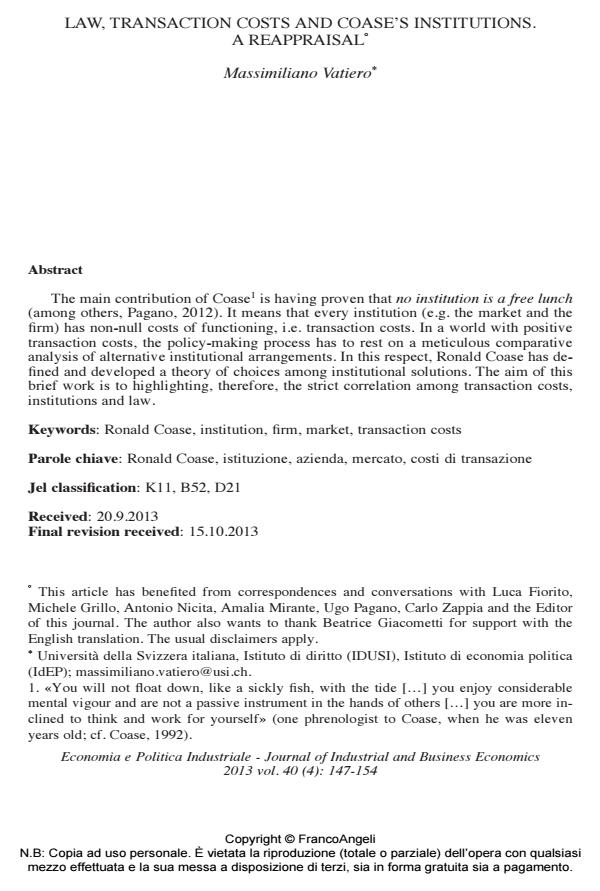Law, transaction costs and coase’s institutions. A reappraisal
Journal title ECONOMIA E POLITICA INDUSTRIALE
Author/s Massimiliano Vatiero
Publishing Year 2014 Issue 2013/4
Language English Pages 8 P. 147-154 File size 90 KB
DOI 10.3280/POLI2013-004006
DOI is like a bar code for intellectual property: to have more infomation
click here
Below, you can see the article first page
If you want to buy this article in PDF format, you can do it, following the instructions to buy download credits

FrancoAngeli is member of Publishers International Linking Association, Inc (PILA), a not-for-profit association which run the CrossRef service enabling links to and from online scholarly content.
The main contribution of Coase1 is having proven that no institution is a free lunch (among others, Pagano, 2012). It means that every institution (e.g. the market and the firm) has non-null costs of functioning, i.e. transaction costs. In a world with positive transaction costs, the policy-making process has to rest on a meticulous comparative analysis of alternative institutional arrangements. In this respect, Ronald Coase has defined and developed a theory of choices among institutional solutions. The aim of this brief work is to highlighting, therefore, the strict correlation among transaction costs, institutions and law.
Keywords: Ronald Coase, institution, firm, market, transaction costs
Jel codes: K11, B52, D21
Massimiliano Vatiero, Law, transaction costs and coase’s institutions. A reappraisal in "ECONOMIA E POLITICA INDUSTRIALE " 4/2013, pp 147-154, DOI: 10.3280/POLI2013-004006